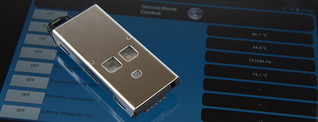 In my previous post I discussed the benefits and drawbacks of crowdsourced scientific data collection, but I focused on very basic "see and report" methods. With sophisticated hardware technology getting cheaper every year it is now becoming more common for the general public to be involved in more high-tech scientific monitoring. The image above shows the most recent iteration of the Sensordrone, which was launched from a kickstarter campaign. This device makes use of the immense processing power of mobile devices to make sense of data. While most of the features of the Sensordrone are somewhat frivolous, it does have some potential uses for scientific endeavors e.g. precision gas, temperature, and pressure sensors. The device also has an expansion connector that would allow other sensors to take advantage of its bluetooth interface. I think consumer-level technology like this has tremendous potential for widespread environmental monitoring in the future. Another great example of the power of citizen monitoring is the Air Quality Egg. This application is much more focused on environmental concerns than the Sensordrone and could be very useful in urban areas. "The Air Quality Egg is a sensor system designed to allow anyone to collect very high resolution readings of NO2 and CO concentrations outside of their home. These two gases are the most indicative elements related to urban air pollution that are sense-able by inexpensive, DIY sensors."
0 Comments
Leave a Reply. |
Alex KeyScientist, photographer, and outdoor athlete based in Denver, Colorado. This blog is a place to share science-related news and ideas that I find interesting. Archives
June 2014
Categories
All
|

 RSS Feed
RSS Feed